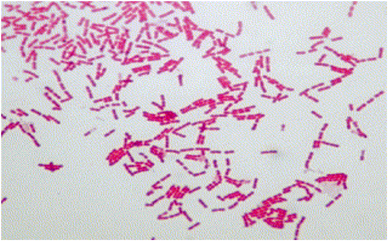
This genus has been described by Henriksen and Bovre in 1976. Appearing in pairs or short chains, that Gram-negative bacilli tend to resist fading.
Still, according to the usual criteria, it may possess fimbriaeand show mobility jerks. Bacteria optional aerobic or anaerobic, oxidase (+) catalase (-), it grows (more aerobically and anaerobically) on blood agar where growth is weak. GC = 47-55%.
Two types of colonies are usually distinguished on blood agar:
– Each spread, widening the surface of the agar (differential diagnosis Eikenella corrode may arise) possess fimbriaeand jerky mobility.
– Others are smooth and convex without other properties.
Three species are described: K. kingae, K. denitrificans, K. indologenes.
These saprophytic species to mucous membranes and upper respiratory tract are infrequently isolated, but probably overlooked most of the time.
K. kingae can be isolated from sputum and bone during secondary infections, septicemia and endocarditis. This is a very sensitive species to beta-lactams, aminoglycosides, macrolides and tetracyclines.
K. denitrificans mainly poses a problem of differential diagnosis with N. gonorrhoeae (he grows on selective medium). Usually isolated from the upper respiratory tract, it can also be found in rectal or genital swabs in blood cultures. It is also a very sensitive species to antibiotics.

You must be logged in to post a comment.